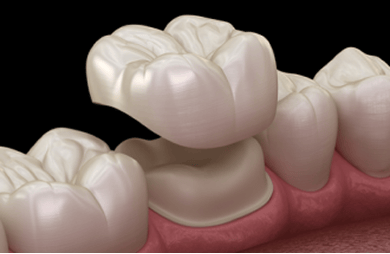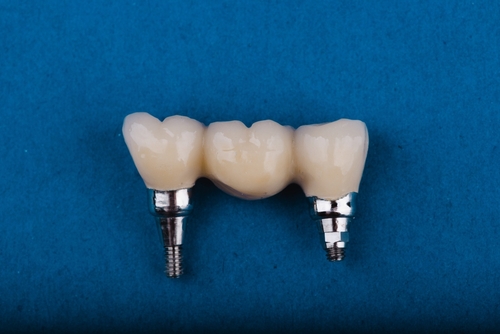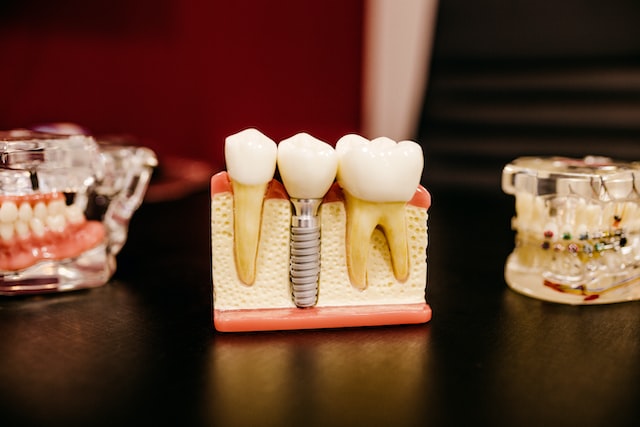In the world of restorative dentistry, dental bridges and dental crowns are two popular options for addressing missing or damaged teeth. Whether you're missing a single tooth or dealing with a broken tooth, both dental bridges and dental crowns can help restore your smile and improve your oral health.
But how do you know which option is right for you? In this comprehensive guide, we'll delve into the types of dental bridges and dental crowns, their procedures, costs, and longevity. So let's bridge the gap and crown your knowledge!
Understanding Dental Bridges
Dental bridges are prosthetic devices that can be used to replace one or more missing teeth. They consist of dental crowns on either side of the gap, with artificial teeth (pontics) in between. Dental bridges are an excellent option for individuals looking to restore their smile and regain proper chewing function. There are several types of dental bridges available, each with its own unique characteristics and advantages.

The 3 Types of Dental Bridges
1. Traditional Dental Bridges
The most common type of dental bridge is the traditional dental bridge. This bridge consists of two dental crowns on each side of the gap, with pontics in the middle. The dental crowns act as anchors, supported by the teeth adjacent to the gap. Traditional dental bridges are a reliable and cost-effective solution for replacing missing teeth.
2. Cantilever Bridges
Cantilever bridges are similar to traditional bridges but differ in the number of dental crowns used. Instead of two crowns, a cantilever bridge only requires one crown for support. The pontic fills the gap, while the single crown is attached to a natural tooth adjacent to the space. Cantilever bridges are often recommended when preserving natural teeth is a priority, as they eliminate the need to grind down adjacent teeth.
3. Implant-Supported Bridges
Implant-supported bridges are an excellent solution for individuals missing multiple teeth. These bridges are anchored to dental implants, which are surgically placed into the jawbone. The implants act as artificial tooth roots, providing a stable foundation for the bridge. Implant-supported bridges offer excellent stability and chewing function, making them a popular choice among patients.
Exploring Dental Crown Procedures
Dental crowns, also known as caps, are prosthetic restorations that cover and protect damaged or weakened teeth. They can be made from various materials such as porcelain, metal, or a combination of both. Dental crowns are an effective solution for teeth that are cracked, fractured, or severely decayed. The procedure for fitting a dental crown typically involves multiple steps.

How Are Dental Crowns Fitted?
1. Taking an Impression
During your initial visit at Mulgrave Dental Group, your dentist will take impressions of your upper and lower teeth. These impressions serve as a permanent record of your teeth's appearance and how they fit together when your jaws are closed. A tray filled with a soft gel-like material is pressed onto your teeth, creating an accurate duplicate of your dental arches.
2. Tooth Preparation
Once the impressions are taken, your dentist will numb the area with a local anaesthetic and sculpt the tooth to create space for the crown. The tooth is carefully shaped using a dental drill, reducing its size by one to two millimetres. Another impression is then taken to record the changes made to the prepared tooth. The impressions are sent to a dental technician who fabricates the crown according to the dentist's instructions.
3. Temporary Crown Placement
To protect the prepared tooth, a temporary crown is placed using temporary cement. While wearing a temporary crown, it's essential to avoid sticky or hard foods and chew on the opposite side of your mouth. Temporary crowns are not as durable as permanent crowns, and they serve as a temporary solution until the final crown is ready.
4. Permanent Crown Attachment
During your second appointment, the temporary crown is removed, and the new crown is checked for fit and colour match. If everything looks perfect, the crown is permanently attached to the tooth using dental cement. The cement usually takes less than an hour to set and requires 24 hours to reach full strength. Your dentist will ensure that the crown feels comfortable and natural in your mouth, making any necessary adjustments for optimal bite alignment.
5. Same-Day Procedure
If you opt for a same-day dental crown, the procedure skips the temporary crown entirely. Instead, your dentist will take digital photographs of your mouth and use them to create a crown right in the office. The digital scan is used to fabricate the crown, which can typically be completed within one to two hours. Once ready, the crown is cemented in place, and the procedure is complete.
The Cost of Dental Bridges and Dental Crowns
The cost of dental bridges and dental crowns can vary depending on several factors, including the type of bridge or crown and the materials used. Let's explore the cost ranges for each option:
Dental Bridge Costs
-
Traditional Dental Bridge: $3,000 to $4,500
-
Cantilever Bridge: $2,000 to $2,700
-
Implant-Supported Bridge: $5,000 to $7,500 (including the cost of implants)
Dental Crown Costs
-
Porcelain Crown: $800 to $1,500 or more per crown
-
Gold Crown: Varies
-
Porcelain-Fused-to-Metal Crown: Varies
It's important to note that dental insurance coverage may vary, and not all plans cover the full cost of bridges or crowns. It's recommended to check with your insurance provider to understand your coverage and potential out-of-pocket expenses.
How Long Do Dental Bridges and Dental Crowns Last?
The lifespan of dental bridges and dental crowns can vary depending on several factors, including the materials used, the location in the mouth, and oral hygiene habits. On average, dental bridges and crowns can last between 10 to 15 years with proper care and maintenance. Regular dental hygiene practices such as brushing and flossing daily, along with routine check-ups and cleanings, can help prolong the longevity of your restorations.

Let’s Rebuild Your Smile - Book A Dental Consultation
Dental bridges and dental crowns are excellent restorative options for individuals dealing with missing or damaged teeth. While dental bridges are ideal for replacing missing teeth, dental crowns offer a solution for damaged or weakened teeth. The choice between the two depends on your specific dental needs and the recommendation of your dentist. By understanding the types, procedures, costs, and longevity of dental bridges and crowns, you can make an informed decision about which option is right for you. Remember to consult with your dentist to determine the best course of action for restoring your smile and oral health.
If you believe you need a dental bridge or crown, don't hesitate to contact our clinic to explore your options. At Mulgrave Dental Group, our team of dental professionals is dedicated to providing personalised care and helping you achieve a healthy and beautiful smile. Let us bridge the gap and crown your dental journey today! Book a dental consultation online to explore the best options for you.
Smile Makeover Client
Your Healthier Smile Awaits
Whether you're looking to improve your dental health or enhance your smile, we're here to help. Book an appointment with Mulgrave Dental Group today!
Book Now


